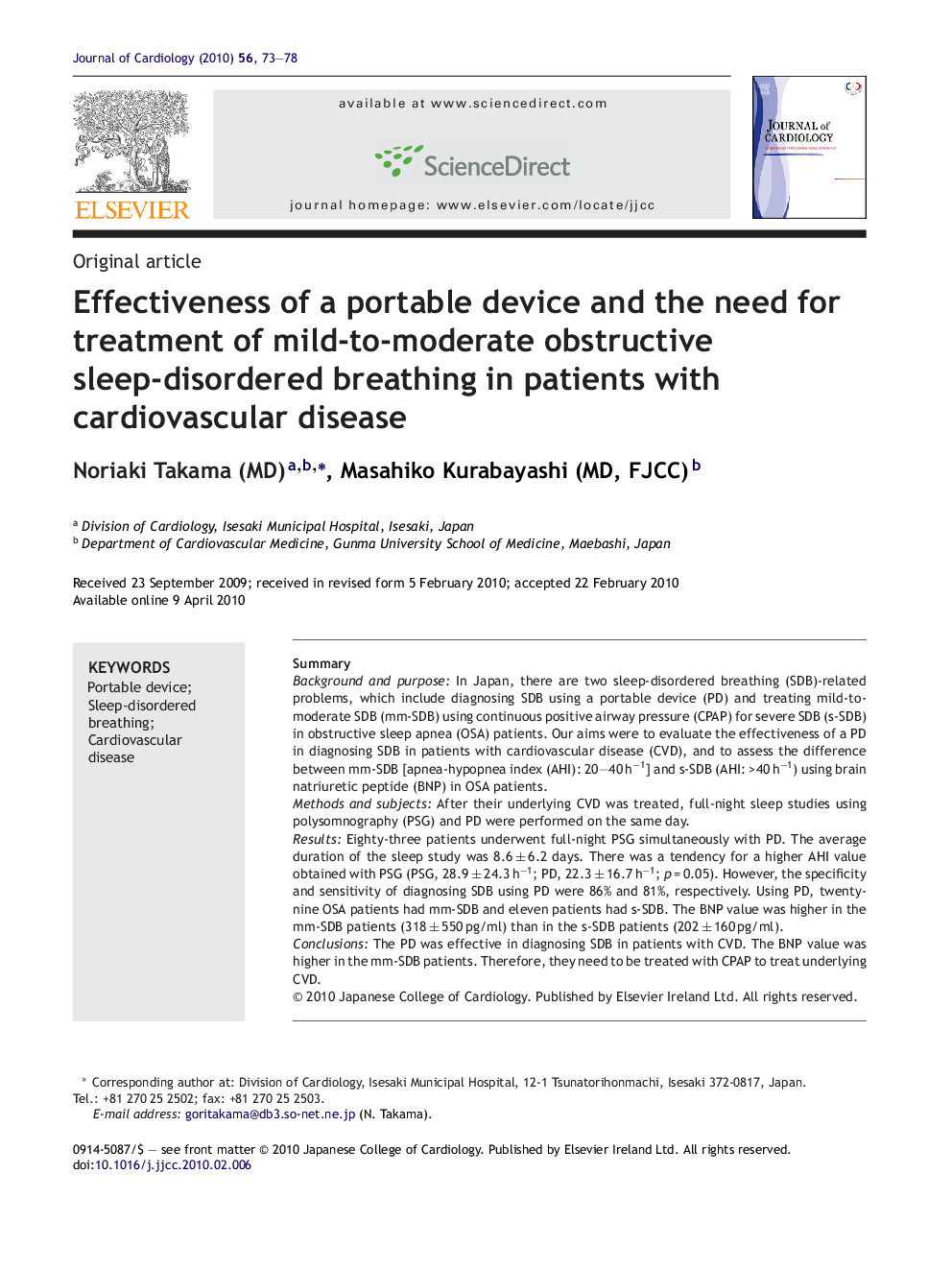| Article ID | Journal | Published Year | Pages | File Type |
|---|---|---|---|---|
| 2963618 | Journal of Cardiology | 2010 | 6 Pages |
SummaryBackground and purposeIn Japan, there are two sleep-disordered breathing (SDB)-related problems, which include diagnosing SDB using a portable device (PD) and treating mild-to-moderate SDB (mm-SDB) using continuous positive airway pressure (CPAP) for severe SDB (s-SDB) in obstructive sleep apnea (OSA) patients. Our aims were to evaluate the effectiveness of a PD in diagnosing SDB in patients with cardiovascular disease (CVD), and to assess the difference between mm-SDB [apnea-hypopnea index (AHI): 20–40 h−1] and s-SDB (AHI: >40 h−1) using brain natriuretic peptide (BNP) in OSA patients.Methods and subjectsAfter their underlying CVD was treated, full-night sleep studies using polysomnography (PSG) and PD were performed on the same day.ResultsEighty-three patients underwent full-night PSG simultaneously with PD. The average duration of the sleep study was 8.6 ± 6.2 days. There was a tendency for a higher AHI value obtained with PSG (PSG, 28.9 ± 24.3 h−1; PD, 22.3 ± 16.7 h−1; p = 0.05). However, the specificity and sensitivity of diagnosing SDB using PD were 86% and 81%, respectively. Using PD, twenty-nine OSA patients had mm-SDB and eleven patients had s-SDB. The BNP value was higher in the mm-SDB patients (318 ± 550 pg/ml) than in the s-SDB patients (202 ± 160 pg/ml).ConclusionsThe PD was effective in diagnosing SDB in patients with CVD. The BNP value was higher in the mm-SDB patients. Therefore, they need to be treated with CPAP to treat underlying CVD.
